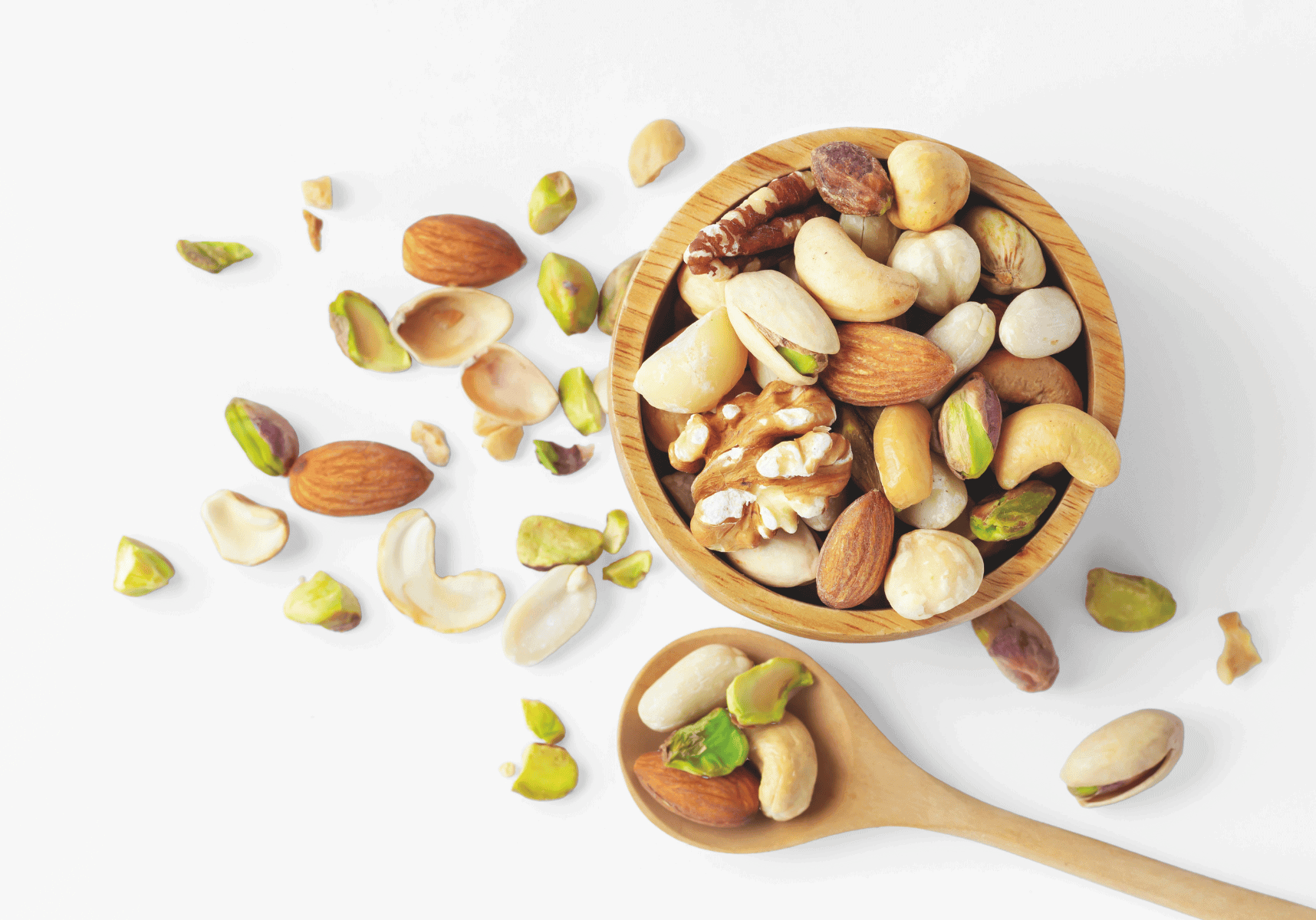
Food trends 2025
10 healthy eating trends for the year ahead, according to the experts at Whole Foods Market
Reading time: 5-6 minutes
1. International snacking
The snack aisle is a perfect place for disruption with brands taking on salty snacks like popcorn and adding in global flavours to create fusion foods that have mass appeal and entice consumers to try something new. On packaging, brands can tell their snack story by sharing their cultural roots and nostalgic childhood food memories. Products in this trend introduce consumers to different parts of the world through a mix of traditional international snacks like chamoy candy and new combinations like mango sticky rice chips or a chilli crunch oil edamame and nut mix.
2. The ever-adaptable dumpling
Dumplings are dough pockets with a typically savoury filling, usually cooked by boiling, steaming or pan frying. Also known as pocket foods, they’re showing up in multiple aisles including frozen and shelf-stable single-serve formats. These products hit on a few trends — many are authentic to a founder’s cultural roots and ripe for fusion and unexpected mash-ups, which have continued popularity both on TikTok and restaurant menus. Dumplings are long-standing staples in cuisines across the globe, making them a trend everyone can feel involved in and get excited about.
3. Crunch: texture of the moment
From crispy grains and granola to sprouted and fermented nuts to roasted chickpeas and mushroom chips — consumers are increasingly reaching for these items to enhance meals and add texture to breakfast, lunch and dinner. Brands are creating crunchier versions of the ever-popular chilli crisp, while new seasonings marketed for their texture are stars of salads and roasted veggies. Dehydrated fruits and candy are taking over social media, with consumers seeking that light, airy crunch. This trending texture can also be seen in beverages and desserts, like crème brûlée espresso martinis or pistachio topped pastries.
4. Hydration hype
Reusable water bottle culture is upon us, but consumers want more from their H2O these days, seeking added electrolytes and hydration in more innovative forms. It’s impossible to ignore the trend at food and beverage trade shows, where you’ll find popsicles with electrolytes, sparkling coconut water, chlorophyll water and even protein water. New players are emerging in this space, like cactus waters that contain antioxidants and electrolytes, and better-for-you competitors to sugary and artificially coloured sports drinks. Even kids can get in on this trend with new and tasty beverages in fun formats like pouches and mini coconuts.
5. Tea’s time
There’s tea talk everywhere you turn — both in flavour popularity for food like desserts and granola (chai, Earl Grey, London fog), new steeping formats (tea strips, cold-brew bags for water bottles and powders) and a wave of new hot products like plant-based milk teas and sparkling teas. Vintage-inspired adult tea parties are poised to replace happy hour as customers looking for function can seek out brews with added adaptogens and benefits.
6. Next-level compostable
Products that aren’t ditching packaging completely are going the compostable route, making some or all elements of their packaging compostable. Some brands, like Compostic, are even entering new territory with home-compostable products, meaning all components can compost in a home bin versus requiring a commercial process. In the produce world, Rainer Fruit is working on commercially compostable produce stickers.
7. More-sustainable sips
Forward-thinking boozy brands are working to reduce their environmental footprints. Natural and organic wines may not be new, but brands are taking things a step further by embracing regenerative practices and lower-impact packaging. For example, the Sustainable Wine Roundtable (of which Whole Foods Market is a founding member), has a goal to drop bottle weights 25% by 2026.
8. Sourdough stepped up
During the pandemic, we saw a sourdough resurgence with at-home bakers trying their hand at the classic fermented nutrition zone bread. Now we’re seeing this trend move into grocery aisles in both traditional and innovative ways — pizza crusts, flatbreads, brownies, crackers, chocolate and more — with customers looking for the benefits and flavour that sourdough offers without spending hours in the kitchen. There’s also a variety of innovative sourdough breads launching in the Whole Foods Market Bakery, including Pumpkin Turmeric.
9. Protein power-up
Consumers are looking to incorporate more protein in their diet beyond traditional powders and bars, with an emphasis on ramping up protein consumption at meal times and with ‘whole food’ snacking. Recipes incorporating cottage cheese (still the ‘it girl’ in dairy) may have kick-started customers’ desires to seek out protein in whole food sources.
10. Plant-based aquatic ingredients
With the continued popularity of seaweed and the increasing interest in harvesting readily available aquatic plants for more-sustainable sources of protein and nutrients, the tide is turning toward foods made with more sea and freshwater greens. Sea moss, in particular, has been making a splash as a buzzy wellness ingredient — especially touted for its iron, magnesium and iodine content — in formats such as beverages and gummies. Duckweed, or water lentils, is in the early stages of emerging on the scene and boasts a higher protein content than other leafy greens, and agar-agar (a plant-based gelatin alternative that comes from red algae) is primarily fibre based and promoted for digestive support.




